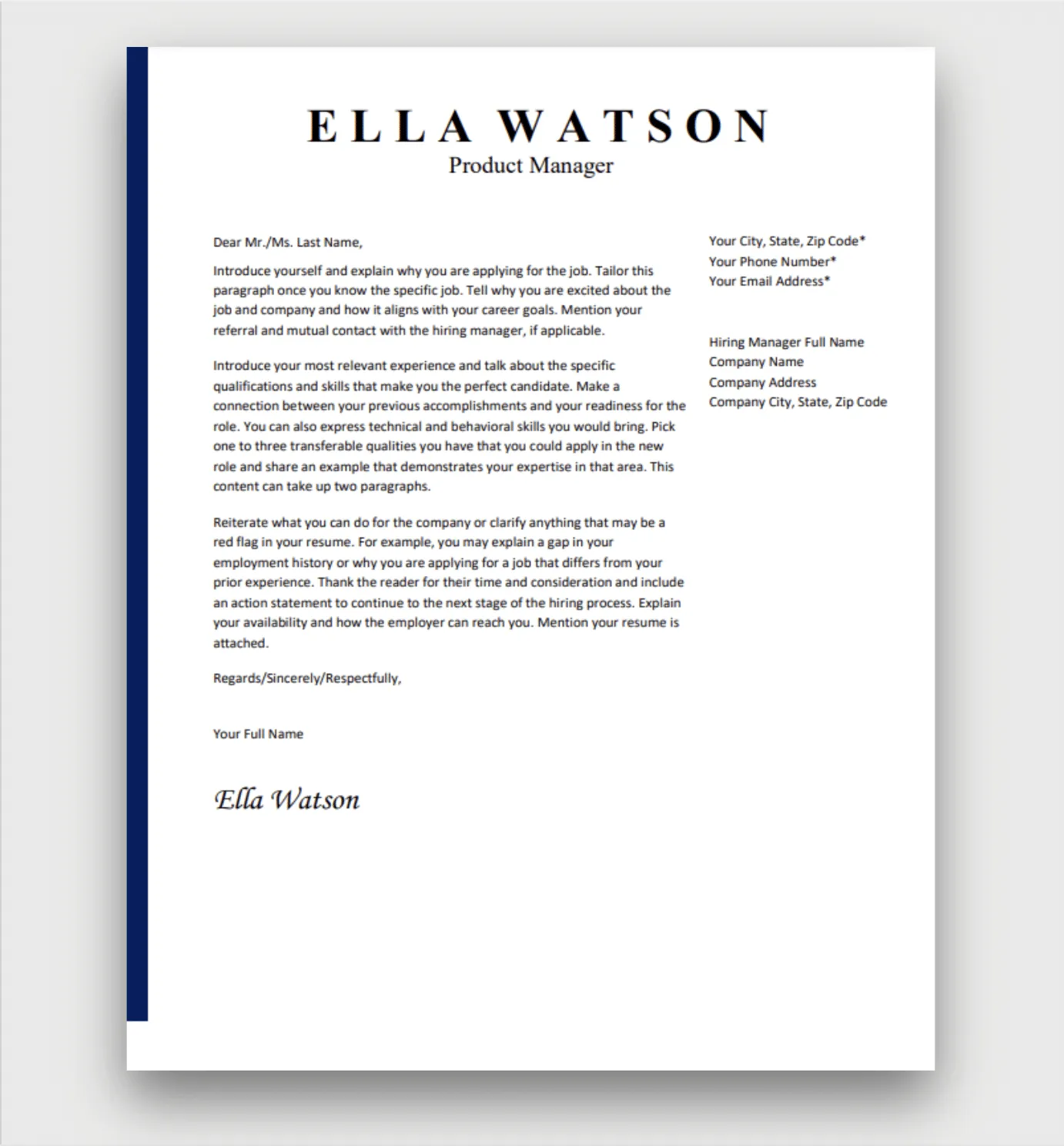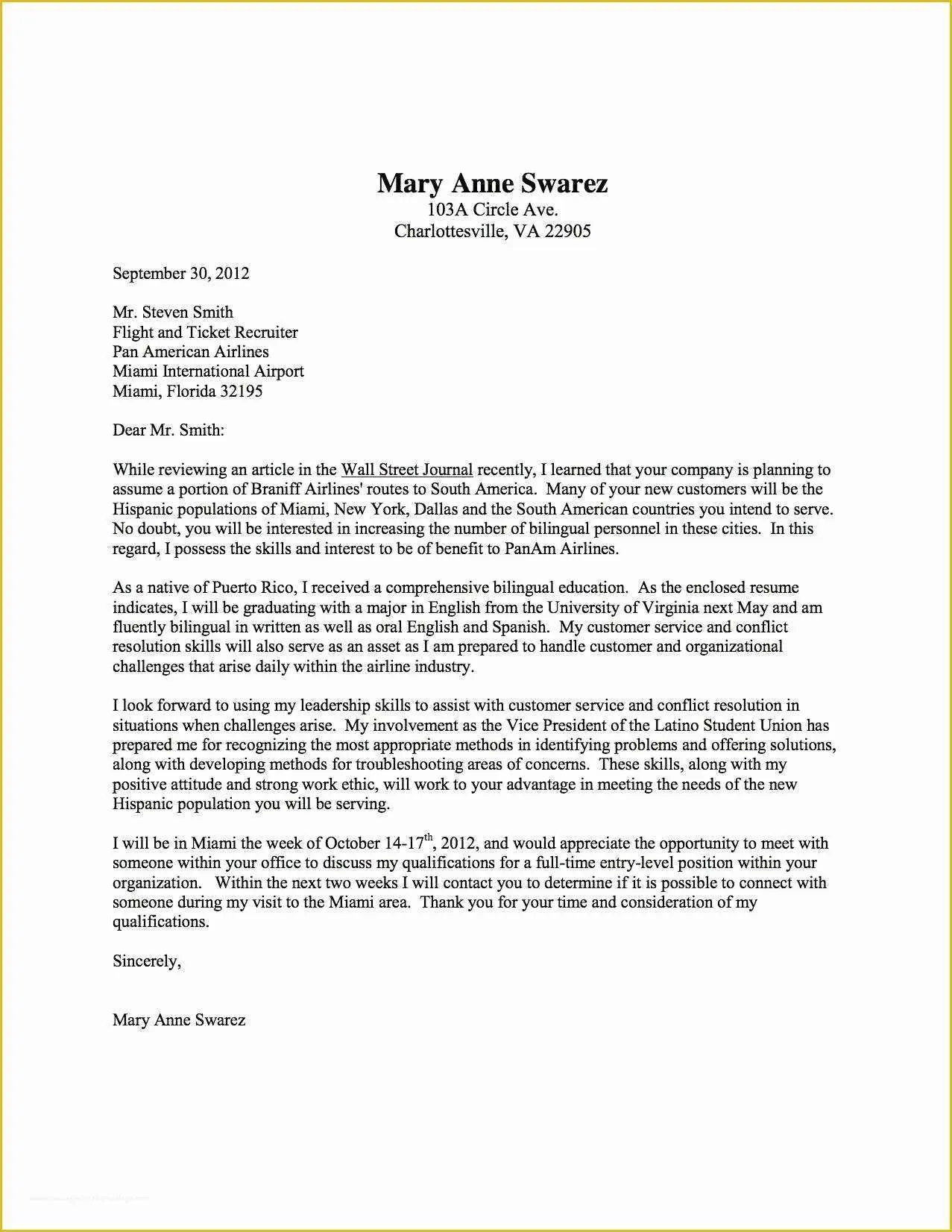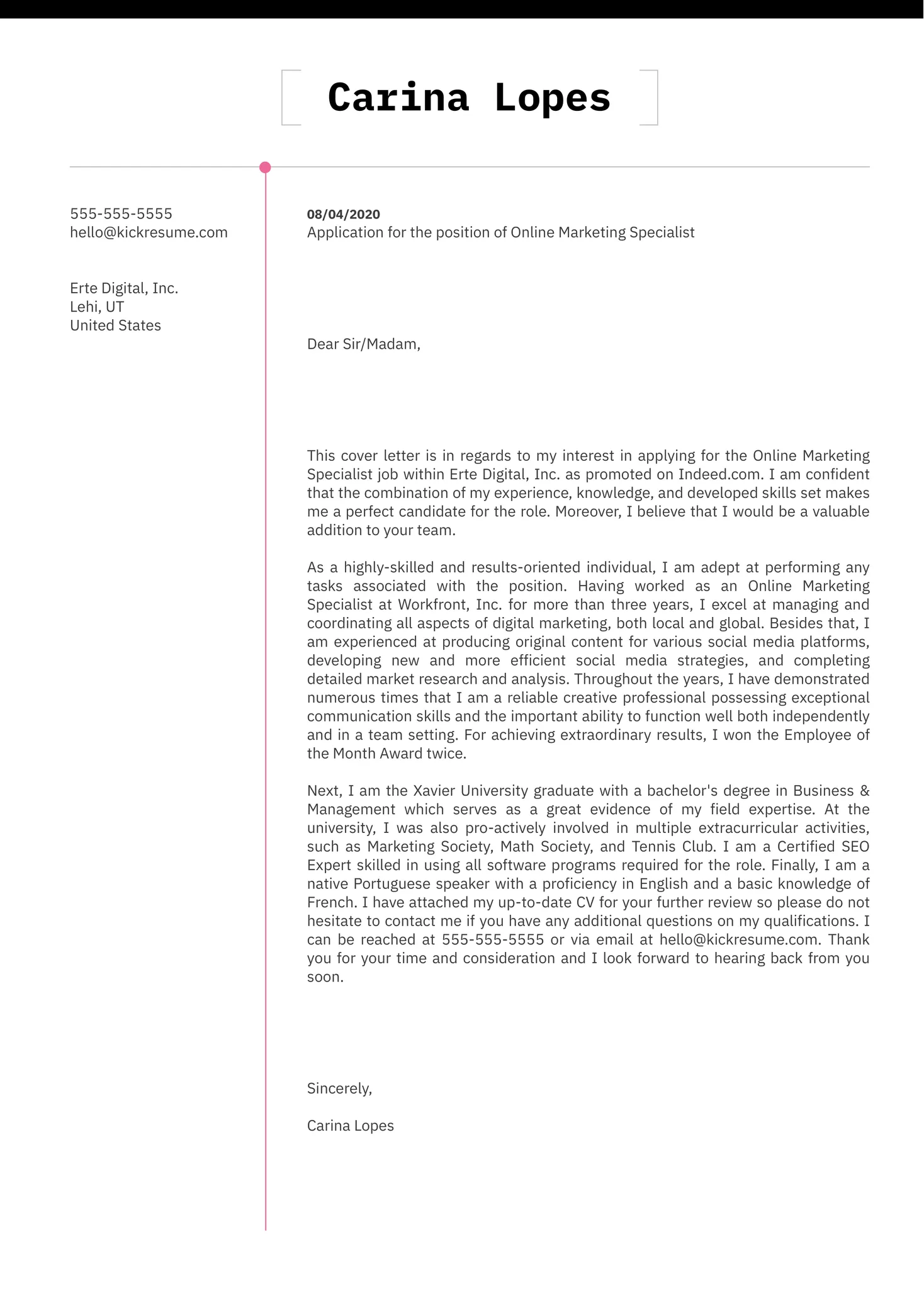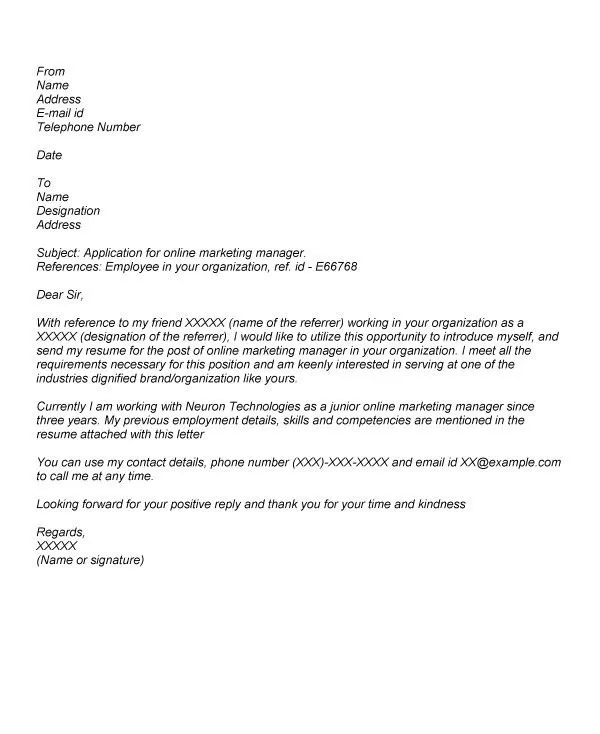Why Cover Letters Matter for Online Applications
In the digital age, online applications have become the norm for job seekers. With just a few clicks, you can apply for numerous positions. However, a resume alone may not always be enough to stand out in the competitive job market. This is where a well-crafted cover letter comes in. It serves as your personal introduction to the hiring manager, allowing you to showcase your personality, skills, and enthusiasm for the role. Many applicants miss the opportunity to make a strong first impression by overlooking the importance of a cover letter, and those who do include one often fail to fully utilize its potential. A compelling cover letter can significantly increase your chances of landing an interview. It’s your chance to connect with the employer on a more personal level, elaborate on your qualifications, and demonstrate why you’re the ideal candidate for the job, so let’s explore how to write a cover letter sample online application.
Highlighting Your Skills and Experience
Your cover letter is the ideal place to emphasize the skills and experiences that directly align with the job requirements. Don’t simply restate what’s already in your resume. Instead, provide specific examples that demonstrate how you’ve utilized your skills in previous roles. Quantify your achievements whenever possible; for example, if you increased sales in a previous role, mention the percentage or the specific dollar amount. This helps employers understand the tangible impact you’ve made. Focus on the most relevant experiences and skills. Tailor your content to the specific job description, ensuring you address the key requirements and keywords mentioned by the hiring manager. By doing so, you highlight the value you bring to the table and your suitability for the role, making it easier for recruiters to see you as a strong match.
Tailoring Your Cover Letter

Generic cover letters are easy to spot and often end up in the rejection pile. To make your application stand out, personalize your cover letter for each job you apply for. This means tailoring it to the specific company, role, and hiring manager, when possible. Research the company and the specific job requirements. Show that you understand their needs and are excited about the opportunity. Mentioning specific projects or initiatives the company is involved in demonstrates your genuine interest and attention to detail. Avoid generic opening and closing statements. Instead, write a unique introduction that captures the reader’s attention and a closing that reinforces your interest and calls for action.
Researching the Company
Before you start writing, thoroughly research the company. Visit their website, read their “About Us” section, and explore their social media profiles. Understand their mission, values, and recent news. Identify the key priorities of the company and how your skills align with them. By demonstrating this knowledge, you show the employer that you’re genuinely interested in their company and not just applying for any job. This personalization can make a significant impact, helping you stand out from other applicants. For example, if the company recently launched a new initiative, you could briefly mention it in your cover letter and how your experience could contribute to its success. Also, personalize your letter to include the name of the hiring manager if available, addressing your application to a specific person rather than using a generic greeting.
Using Keywords Effectively
Many companies use Applicant Tracking Systems (ATS) to screen applications. These systems scan for keywords related to the job description, so it is important to incorporate relevant keywords throughout your cover letter. Review the job description carefully and identify the key skills, qualifications, and requirements. Integrate these keywords naturally into your sentences. Do not simply stuff keywords, as this can make your writing sound unnatural and unprofessional. Instead, use them strategically within the context of your accomplishments and experiences. When describing your skills, use the same terminology the company uses in the job description, but also use synonyms to vary the language and improve readability. This not only helps you pass through ATS filters but also demonstrates that you understand the job requirements and have the necessary qualifications.
Formatting and Structure for Online Submissions

When applying online, formatting is important. Because of how many applications get denied due to poor formatting. Pay close attention to the file format, font, layout, and conciseness of your cover letter. Ensure your document is easy to read and visually appealing. Most online application systems accept common formats such as .doc, .docx, or .pdf. PDF is often preferred because it preserves the formatting of your document regardless of the recipient’s operating system or software. Choose a clear and professional font. Maintain consistent spacing and use concise paragraphs to improve readability. Avoid unnecessary graphics or complex formatting that might not display correctly on different devices. If possible, preview your cover letter and resume in the system where you are applying to ensure they look as you intend. This step can save you from potentially making a bad impression due to formatting issues.
Choosing the Right Font and Layout
Selecting the right font and layout is crucial for readability. Choose a professional and easy-to-read font, such as Times New Roman, Arial, Calibri, or Helvetica. Keep the font size between 10 and 12 points. Use consistent formatting throughout your cover letter, including the font style, size, and spacing. Use clear headings and subheadings to break up the text and make it easier to scan. Use bullet points to highlight your accomplishments and skills. Maintain consistent margins (typically 1 inch on all sides) and line spacing (single or 1.15) to create a clean and organized appearance. Avoid using excessive bolding, italics, or underlining, which can distract from the content. A well-formatted cover letter shows that you pay attention to detail and that you respect the reader’s time.
Keeping it Concise
Keep your cover letter concise and to the point, ideally one page long. Hiring managers are often busy and don’t have time to read lengthy documents. Focus on the most important information, and avoid unnecessary details. Start with a strong opening that captures the reader’s attention and states the position you’re applying for. In the body of your letter, highlight your relevant skills, experiences, and achievements that directly align with the job requirements. Use concise language and active voice to make your writing clear and engaging. Make every word count. The goal is to quickly convince the hiring manager that you are a good fit for the job, so it’s better to offer value, rather than word count.
Proofreading and Editing

Proofreading and editing your cover letter is one of the most important steps in the application process. Even a small typo can undermine your credibility and give the impression that you don’t pay attention to detail. Carefully review your cover letter for any grammatical errors, spelling mistakes, and punctuation issues. Read your cover letter aloud to catch any awkward phrasing or sentence structure. Ask a friend, family member, or career advisor to proofread your cover letter. A fresh pair of eyes can often spot errors that you might have missed. Make sure all the information is accurate and consistent with your resume and application form. By taking the time to proofread and edit, you demonstrate your professionalism and commitment to quality.
Common Mistakes to Avoid
Avoiding common mistakes is key to making a good impression. Be mindful of what to avoid when writing your cover letter. Common errors can damage your chances, regardless of how qualified you are for the role. Generic cover letters, lack of customization, and typos are all red flags to hiring managers. Take time to personalize your application, proofread your document, and make sure it directly addresses the job requirements.
Lack of Customization
One of the most significant mistakes is sending a generic cover letter that is not tailored to the specific job or company. A generic cover letter shows a lack of effort and can make it seem like you are mass-applying for jobs without much thought. Instead of a generic approach, customize your cover letter for each position. Research the company, understand their needs, and highlight your skills and experience in a way that addresses their specific requirements. By demonstrating that you understand the company’s values, mission, and the challenges they face, you show that you are genuinely interested in the role. This attention to detail will set you apart from applicants who use a one-size-fits-all approach.
Typos and Grammatical Errors

Typos and grammatical errors can quickly undermine your credibility. They can be a clear indication of carelessness, poor attention to detail, and a lack of professionalism. Proofread your cover letter meticulously, and consider using grammar-checking tools to catch any mistakes you might have missed. Read your cover letter aloud to identify awkward phrasing or sentence structure. A well-written and error-free cover letter demonstrates your communication skills and your commitment to quality. Ask a friend or family member to proofread your cover letter as well. This will help ensure you catch any mistakes that you may have overlooked.
Overly Generic Language
Avoid using overly generic language, cliches, and buzzwords in your cover letter. Phrases like “hard worker,” “team player,” and “results-oriented” are overused and can make your application sound unoriginal. Instead, provide specific examples that demonstrate your skills and achievements. Use strong action verbs, such as “managed,” “led,” “developed,” and “achieved,” to describe your accomplishments. Quantify your results whenever possible. Instead of saying, “I improved sales,” say, “I increased sales by 15% in six months.” By providing concrete examples and avoiding generic language, you can make your cover letter more compelling and memorable.
Call to Action
A strong call to action is an important part of your cover letter. Your cover letter should end with a clear call to action. Reiterate your interest in the position and the company, and express your enthusiasm for the opportunity. Include a statement that you are available for an interview, and provide your contact information. Thank the hiring manager for their time and consideration. By including a call to action, you provide a clear direction for the hiring manager, making it easier for them to proceed with your application. A well-crafted call to action can increase the likelihood of getting an interview and ultimately landing the job.
